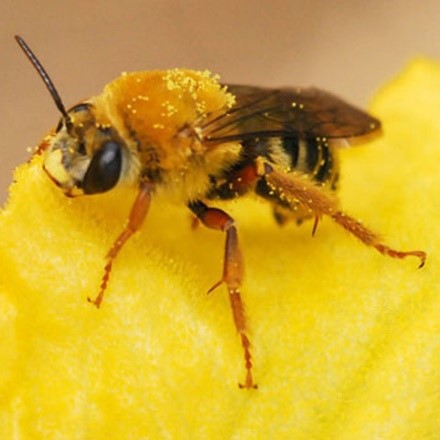May The Gourds Be With You
- 2022-09-04
- By mkirk
- Posted in Horticulture, The Garden Buzz
By Donnetta Wilhelm, Colorado Master Gardener
The Cucurbitaceae family of plants features about 975 species of food and ornamental plants, which includes cucumbers, gourds, melons, squashes, and pumpkins. It is one of the largest plant families used as food for human consumption. Three standouts of this plant family: it boasts some of the biggest fruits and vegetables in world, the plants have many interesting characteristics, and this plant family offers a variety of uses other than just human consumption.
Grow Big
The Guinness Book of World Records lists the largest pumpkin in the world weighed just above 2,702 pounds in Italy in 2021. The longest bottle gourd, known as calabash, measured 12.5 feet long in Canada in 2015. The longest cucumber on record is 42.1 inches in 2011 in the United Kingdom. Not to be outdone by other countries, the heaviest butternut squash weighed 65.5 pounds in 2021 in Rhode Island.
Interesting Characteristics
Cucurbitaceae plants are monoecious, meaning they have both separate male and female flowers. While only the female flowers produce fruit, they need the male flowers to accomplish this task. Plants in this family are mostly prostrate or herbaceous annuals and are native to the tropics and subtropic regions. When grown in Colorado, they are warm weather lovers, need full sun, and for best production, plenty of water as the fruits begin to develop.

Bumblebees and squash bees (Peponapis and Xenoglossa) are the best pollinators of pumpkins and squash since they forage in the morning. Squash bees have a life cycle that is perfectly timed with the life cycles of cucurbits. These bees have very fuzzy bodies that accumulate substantial amounts of pollen.
Three genera, Cucumis (cucumbers, melons), Cucurbita (pumpkins, squash), and Citrullus (watermelons), rank among the top 10 in economic importance among the edible crops of the world.
An interesting fact about cucumbers is that because they have seeds in the middle and grow from the flower of a cucumber plant, they are botanically a fruit. Watermelon is considered the most popular among the cucurbits whose delicious fruit are widely consumed throughout the world. The red pigment of watermelon is the antioxidant lycopene, and watermelon has more lycopene than tomato.
Cucurbits are rich in carotenoids, terpenoids, saponins, and phytochemicals. Fruits, vegetables, and edible seeds from the Cucurbitaceae family have a positive influence on human health. Various studies have shown the plants in this family have antioxidant, antidiabetic, anti-inflammatory, and cleansing properties, and the seeds and oils have high nutritional value.
Usefulness
Cucurbitaceae is one of the most varied and widely used plant families. The cucumber is mostly used as a consumption crop, used in soups, sandwiches, drinks, dips, and a variety of pickling. But cucumbers are also used in a wide range of hair, skin, and beauty products. Muskmelon and watermelon are used fresh in desserts, and alone or in combination with other fruits in salads. Watermelon rind is commonly pickled. In Russia, beer is produced from watermelon juice. Pumpkin and squash are cooked with other vegetables or used in pie-making, cookies, breads, and roasted seeds.

Luffa, bottle gourd, ash gourd, bitter gourd, pointed gourd, and Indian squash are cooked, and some are fried for the preparation of various dishes. Blossoms of squash, pumpkin, and ash gourd are consumed as edible flowers stuffed with a variety of delectable cheeses, herbs, rice, mushrooms, and crabmeat. Hundreds of recipes can also be found for the use of pumpkin leaves.
Gourds are not only used for food, but for making musical instruments, containers, and other decorative pieces. The Lagenaria siceraria (bottle gourd) is commonly used for anything from bowls to musical instruments to smoking pipes. They are the preferred water vessel containers in many parts of the world because they are lighter than earthenware jars. Luffa cylindrica (sponge gourd) is used as loofah, sponges and scrubbers, and even as filters, while Sicana odorifera (casabanana or musk cucumber) is often used as an air freshener as the ripe fruits produce a long-lasting, fruity fragrance. Siraitia grosvenorii (monkfruit) is used as a sweetener, 300 times sweeter than sugar and lower in calories.
Many different gourds found in Africa and India are used to make musical instruments such as drums, lutes, and sitars. Shaker gourds are probably one of the earliest of all musical instruments, and the Cucurbita Palamta (Coyote melon) is used to create maracas.

When Irish immigrants moved to the United States, they brought with them the myth of “Stingy Jack.” Rather than carving turnips like in Ireland, they began using the locally grown pumpkins for carving. The Jack-o’-lantern variety of pumpkins have a thinner shell and less flesh for better carving.
Western culture esteems ornamental gourds for autumn decorations inside and outside the home, special occasion accents, and birdhouses.
Whether trying to grow the world’s largest zucchini, pumpkins for the World Championship Punkin Chunkin competition, cucumbers for grandma’s favorite pickling recipe, or the beautiful ornamental gourds for autumn or holiday décor, there is a Cucurbitaceae perfect for your garden.
Horticulture Resources
- Garden Buzz Archives
- CSU Extension Resources
- Colorado Master Gardener Program
- Foothills to Plains Native Plant Master Program
- Native Bee Watch Community Science Program
- The Co-Hort Blog
- PlantTalk Colorado
- Soil Testing
- Plant Select
- Emerald Ash Borer
- Japanese Beetle
- Colorado State Forest Service
- Ask an Expert


